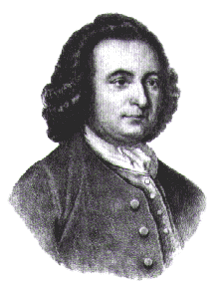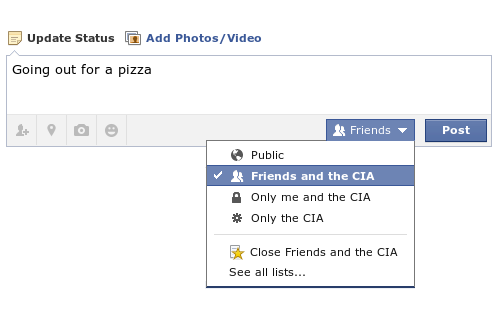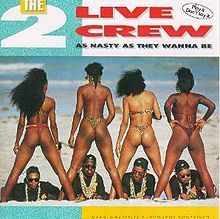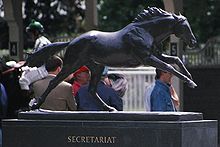Author's posts
Jun 13 2013
Even Spying Is a Private Industry
Cross posted from The Stars Hollow Gazette
Like much of our government, spying has been privatized. 70% of surveillance is done by private companies that translates to $6 billion dollars with a half a million employees.
Meet the contractors analyzing your private data
by Tim Shorrock
Private companies are getting rich probing your personal information for the government. Call it Digital Blackwater
Amid the torrent of stories about the shocking new revelations about the National Security Agency, few have bothered to ask a central question. Who’s actually doing the work of analyzing all the data, metadata and personal information pouring into the agency from Verizon and nine key Internet service providers for its ever-expanding surveillance of American citizens?
Over the past decade, the U.S. intelligence community has relied increasingly on the technical expertise of private firms such as Booz Allen, SAIC, the Boeing subsidiary Narus and Northrop Grumman. About 70 percent of the national intelligence budget is now spent on the private sector. Former NSA Director Michael V. Hayden has described these firms as a quote “digital Blackwater.” We speak to Tim Shorrock, author of the book “Spies for Hire: The Secret World of Outsourced Intelligence.”
Jun 13 2013
Today on The Stars Hollow Gazette

Our regular featured content-
- On This Day In History June 12 by TheMomCat
- Punting the Pundit by TheMomCat
These featured articles-
- Even Spying Is a Private Industry by TheMomCat
- When You Support George W. Bush’s Policies, like Obama, I Get to Call You a Republican by priceman
- If you have nothing to hide, you have nothing to fear. by joeshikspack
- The Company You Keep by ek hornbeck
Follow us on Twitter @StarsHollowGzt
Write more and often. This is an Open Thread.
Jun 12 2013
On This Day In History June 12
Cross posted from The Stars Hollow Gazette
This is your morning Open Thread. Pour your favorite beverage and review the past and comment on the future.
Find the past “On This Day in History” here.
Click on image to enlarge
June 12 is the 163rd day of the year (164th in leap years) in the Gregorian calendar. There are 202 days remaining until the end of the year.

On this day in 1776, Virginia adopts George Mason’s Declaration of Rights
The assembled slaveholders of Virginia promised to “the good people of VIRGINIA and their posterity” the equal right to life, liberty and property, with the critical condition that the “people” were white men. These same white men were guaranteed that “all power” would be “vested in, and consequently derived from” them. Should a government fail to represent their common interest, a majority of the same held the right to “reform, alter or abolish” the government.
The Declaration was adopted unanimously by the Fifth Virginia Convention at Williamsburg, Virginia on June 12, 1776 as a separate document from the Constitution of Virginia which was later adopted on June 29, 1776. In 1830, the Declaration of Rights was incorporated within the Virginia State Constitution as Article I, but even before that Virginia’s Declaration of Rights stated that it was ‘”the basis and foundation of government” in Virginia. A slightly updated version may still be seen in Virginia’s Constitution, making it legally in effect to this day.
It was initially drafted by George Mason circa May 20, 1776; James Madison assisted him with the section on religious freedom. It was later amended by Thomas Ludwell Lee and the Convention to add a section on the right to uniform government (Section 14). Patrick Henry persuaded the Convention to delete a section that would have prohibited bills of attander, arguing that ordinary laws could be ineffective against some terrifying offenders.
Mason based his initial draft on the rights of citizens described in earlier works such as the English Bill of Rights (1689), and the Declaration can be considered the first modern Constitutional protection of individual rights for citizens of North America. It rejected the notion of privileged political classes or hereditary offices such as the members of Parliament and House of Lords described in the English Bill of Rights.
The Declaration consists of sixteen articles on the subject of which rights “pertain to [the people of Virginia]…as the basis and foundation of Government.” In addition to affirming the inherent nature of natural rights to life, liberty, and property, the Declaration both describes a view of Government as the servant of the people, and enumerates various restrictions on governmental power. Thus, the document is unusual in that it not only prescribes legal rights, but it also describes moral principles upon which a government should be run.
The Virginia Declaration of Rights heavily influenced later documents. Thomas Jefferson is thought to have drawn on it when he drafted the United States Declaration of Independence one month later (July 1776). James Madison was also influenced by the Declaration while drafting the Bill of Rights (completed September 1787, approved 1789), as was the Marquis de Lafayette in voting the French Revolution’s Declaration of the Rights of Man and of the Citizen (1789).
The importance of the Virginia Declaration of Rights is that it was the first constitutional protection of individual rights, rather than protecting just members of Parliament or consisting of simple laws that can be changed as easily as passed.
Jun 12 2013
Around the Blogosphere
 The main purpose our blogging is to communicate our ideas, opinions, and stories both fact and fiction. The best part about the the blogs is information that we might not find in our local news, even if we read it online. Sharing that information is important, especially if it educates, sparks conversation and new ideas. We have all found places that are our favorites that we read everyday, not everyone’s are the same. The Internet is a vast place. Unlike “Punting the Pundits which focuses on opinion pieces mostly from the mainstream media and the larger news web sites, “Around the Blogosphere” will focus more on the medium to smaller blogs and articles written by some of the anonymous and not so anonymous writers and links to some of the smaller pieces that don’t make it to “Pundits” by Krugman, Baker, etc.
The main purpose our blogging is to communicate our ideas, opinions, and stories both fact and fiction. The best part about the the blogs is information that we might not find in our local news, even if we read it online. Sharing that information is important, especially if it educates, sparks conversation and new ideas. We have all found places that are our favorites that we read everyday, not everyone’s are the same. The Internet is a vast place. Unlike “Punting the Pundits which focuses on opinion pieces mostly from the mainstream media and the larger news web sites, “Around the Blogosphere” will focus more on the medium to smaller blogs and articles written by some of the anonymous and not so anonymous writers and links to some of the smaller pieces that don’t make it to “Pundits” by Krugman, Baker, etc.
We encourage you to share your finds with us. It is important that we all stay as well informed as we can.
Follow us on Twitter @StarsHollowGzt
This is an Open Thread.
While most of the traditional MSM is focused the Obama administration’s use of Stasi tactics to fight the never ending was on terror, the internet bloggers provide us with other distractions. I usual have some pearls of wisdom from Paul Krugman but his blogging day ended early with the evacuation of the entire Princeton campus because of a bomb threat that turned out to be false. Someone upset with their grades?
There was this great article in the New York Times’ Opinionator by Nobel Economist Joseph E. Stiglitz:
Apparently, the TSA has no respect for Wookies when they confiscated Chewbacca’s lightsaber, John Aravosis at Americablog has the scoop
Magic words to TSA are not “please” or “thank you”.. It’s “Twitter”.. cane released to go home.. twitter.com/TheWookieeRoar…
— Peter Mayhew (@TheWookieeRoars) June 3, 2013
Over at Corrente, lambert, Rainbow Girl and Hippicaria are starting a new series with facts about “Patient Protection and Affordable Care Act” (PPACA), better known as Obamacare:
At Dependable Renegade, watertiger has game she’d like to play called “”Who Said This?”
“I can assure you, this is not about spying on the American people…There are certain things that are appropriate for me to know that is not appropriate for the bad guys to know.”
You might find the answer a bit of a surprise.
You can catch up with the Bradley Manning trial with Kevin Gosztola at FDL’s The Dissenter:
- Bradley Manning’s Trial-Day 4 (Live Updates)
- Bradley Manning’s Defense Supports Crowd-Funded Stenographers’ Presence at Trial
- The Judicial Lynching of Bradley Manning
- Bradley Manning’s Trial-Day 5 (Live Updates)
There are a couple of good posts by Jon Walker at FDL Action on the negotiations over the immigration reform bill:
- The Most Important Decision for Immigration Reform Rests With Boehner
- Immigration Reform Clears Procedural Hurdle to Get to Senate Floor
Also at MyFDL:
- What If Richard Nixon Had Had Your E-Mail Password?
by Allan Grayson - Who Are We and Why Don’t We Have Any Sense of Proportion About Terrorism?
by letsgetitdone - Surveillance of Banksters Please
by masaccio
At the FDL News Desk, DSWright keeps us informed:
- Rahm Emanuel Tied To Firm Astroturfing Protests Against Chicago Teachers Union
- Obama Administration Drops Opposition To Over-The-Counter Morning After Pill
At Yves Smith‘s place, naked capitalism:
- China to Build Panama Canal Bypass Through Nicaragua
by John Daly - Social Security Numbers – Close Enough for a Drone Strike?
by Patrick Durusau - Mary Jo White Institutionalizes Deutsche Bank Protection Racket at the SEC
by Yves Smith
Atrios at Eschaton and Charles Pierce at Esquire’s Poitics Blog think that the blatant lying by DNI James Clapper is a good reason to fire the guy
A “joke” from our friend Ecchidne of the Snakes:

Click on image to enlarge
Jun 12 2013
Down the Totalitarian Hole of a Security State
Cross posted st The Stars Hollow Gazette
William Binney, a former top official at the National Security Agency, and Glenn Greenwald, the Guardian journalist who has broken the NSA spying stories join Amy Goodman to discuss the crucial matters facing this country over the growing power of the government to secretly collect data and information through secret courts and programs.
“The government is not trying to protect [secrets about NSA surveillance] from the terrorists,” Binney says. “It’s trying to protect knowledge of that program from the citizens of the United States.”
Transcript can be read here
Transcript can be read here
NSA Leak Highlights Key Role Of Private Contractors
by Jonathan Fahey and Adam Goldman
The U.S. government monitors threats to national security with the help of nearly 500,000 people like Edward Snowden – employees of private firms who have access to the government’s most sensitive secrets.
When Snowden, an employee of one of those firms, Booz Allen Hamilton, revealed details of two National Security Agency surveillance programs, he spotlighted the risks of making so many employees of private contractors a key part of the U.S. intelligence apparatus. [..]
Booz Allen, based in McLean, Va., provides consulting services, technology support and analysis to U.S. government agencies and departments. Last year, 98 percent of the company’s $5.9 billion in revenue came from U.S. government contracts. Three-fourths of its 25,000 employees hold government security clearances. Half the employees have top secret clearances.
The company has established deep ties with the government – the kinds of ties that contractors pursue and covet. Contractors stand to gain an edge on competitors by hiring people with the most closely held knowledge of the thinking inside agencies they want to serve and the best access to officials inside. That typically means former government officials.
The relationship often runs both ways: Clapper himself is a former Booz Allen executive. The firm’s vice chairman, John “Mike” McConnell, held Clapper’s position under George W. Bush.
Edward Snowden is an American hero who is risking his life to protect our freedom from a government run amok.
Jun 11 2013
Today on The Stars Hollow Gazette

Our regular featured content-
- On This Day In History June 11 by TheMomCat
- Punting the Pundit by TheMomCat
These featured articles-
- Apathy Generation: Snakes on a Plane! by BobbyK
- Down the Totalitarian Hole of a Security State by TheMomCat
- Good Business? by ek hornbeck
Follow us on Twitter @StarsHollowGzt
Write more and often. This is an Open Thread.
Jun 11 2013
On This Day In History June 11
Cross posted from The Stars Hollow Gazette
This is your morning Open Thread. Pour your favorite beverage and review the past and comment on the future.
Find the past “On This Day in History” here.
Click on image to enlarge
June 11 is the 162nd day of the year (163rd in leap years) in the Gregorian calendar. There are 203 days remaining until the end of the year.
On this day in 1776, the Continental Congress selects Thomas Jefferson of Virginia, John Adams of Massachusetts, Benjamin Franklin of Pennsylvania, Roger Sherman of Connecticut and Robert R. Livingston of New York to draft a declaration of independence.
Knowing Jefferson’s prowess with a pen, Adams urged him to author the first draft of the document, which was then carefully revised by Adams and Franklin before being given to Congress for review on June 28.
The revolutionary treatise began with reverberating prose:
While political maneuvering was setting the stage for an official declaration of independence, a document explaining the decision was being written. On June 11, 1776, Congress appointed a “Committee of Five”, consisting of John Adams of Massachusetts, Benjamin Franklin of Pennsylvania, Thomas Jefferson of Virginia, Robert R. Livingston of New York, and Roger Sherman of Connecticut, to draft a declaration. Because the committee left no minutes, there is some uncertainty about how the drafting process proceeded-accounts written many years later by Jefferson and Adams, although frequently cited, are contradictory and not entirely reliable. What is certain is that the committee, after discussing the general outline that the document should follow, decided that Jefferson would write the first draft. Considering Congress’s busy schedule, Jefferson probably had limited time for writing over the next seventeen days, and likely wrote the draft quickly. He then consulted the others, made some changes, and then produced another copy incorporating these alterations. The committee presented this copy to the Congress on June 28, 1776. The title of the document was “A Declaration by the Representatives of the United States of America, in General Congress assembled.” Congress ordered that the draft “lie on the table”.
On Monday, July 1, having tabled the draft of the declaration, Congress resolved itself into a committee of the whole, with Benjamin Harrison of Virginia presiding, and resumed debate on Lee’s resolution of independence. John Dickinson made one last effort to delay the decision, arguing that Congress should not declare independence without first securing a foreign alliance and finalizing the Articles of Confederation.[64] John Adams gave a speech in reply to Dickinson, restating the case for an immediate declaration.
Jun 10 2013
Today on The Stars Hollow Gazette

Our regular featured content-
- On This Day In History June 10 by TheMomCat
- Punting the Pundit by TheMomCat
These featured articles-
- Anticapitalist Meet-Up: Can the human mind comprehend today’s world? A challenge to all… by Anti-Capitalist Meetup
- Sunday Train: All Aboard for the Cross Illinois Line by Bruce McF
- NO Suzanne Dale Estey for Michael Debell’s open School Board Seat by DungenessLobster
Follow us on Twitter @StarsHollowGzt
Write more and often. This is an Open Thread.
Jun 10 2013
On This Day In History June 10
Cross posted from The Stars Hollow Gazette
This is your morning Open Thread. Pour your favorite beverage and review the past and comment on the future.
Find the past “On This Day in History” here.
June 10 is the 161st day of the year (162nd in leap years) in the Gregorian calendar. There are 204 days remaining until the end of the year.

On this day in 1990, Luther Campbell and fellow 2LiveCrew members are arrested on obscenity charges
Though the First Amendment to the Constitution clearly states that the U.S. Congress “shall make no law…abridging the freedom of speech,” free speech is widely understood to have its limits. It is dangerous and potentially criminal, for instance, to yell, “Fire!” in a crowded theater. But what about yelling “$&%#@!!” in a crowded nightclub? Lenny Bruce and other comedians tested the limits of that practice in the 1960s, but it was not until the late 1980s that the issue of obscenity came front and center in the world of popular music. The group that brought it there was 2LiveCrew, a hip-hop outfit led by Luther “Luke Skyywalker” Campbell. On June 10, 1990, just days after a controversial ruling by a Florida federal judge, Campbell and two other members of 2LiveCrew were arrested on charges of public obscenity after performing material from their album As Nasty As They Wanna Be in a Hollywood, Florida, nightclub.
In 1989, the group released their album, As Nasty As They Wanna Be, which also became the group’s most successful album. A large part of its success was due to the single “Me So Horny”, which was popular despite little radio rotation. The American Family Association (AFA) did not think the presence of a “Parental Advisory” sticker was enough to adequately warn listeners of what was inside the case. Jack Thompson, a lawyer affiliated with the AFA, met with Florida Governor Bob Martinez and convinced him to look into the album to see if it met the legal classification of obscene. In 1990 action was taken at the local level and Nick Navarro, Broward County sheriff, received a ruling from County Circuit Court judge Mel Grossman that probable cause for obscenity violations existed. In response, Luther Campbell maintained that people should focus on issues relating to hunger and poverty rather than on the lyrical content of their music.
Navarro warned record store owners that selling the album may be prosecutable. The 2 Live Crew then filed a suit against Navarro. That June, U.S. district court Judge Jose Gonzalez ruled the album obscene and illegal to sell. Charles Freeman, a local retailer, was arrested two days later, after selling a copy to an undercover police officer. This was followed by the arrest of three members of The 2 Live Crew after they performed some material from the album at a nightclub. They were acquitted soon after, as professor Henry Louis Gates, Jr. testified at their trial in defense of their lyrics. Freeman’s conviction was overturned on appeal as well.
In 1992, the United States Court of Appeals for the Eleventh Circuit overturned the obscenity ruling from Judge Gonzalez, and the Supreme Court of the United States refused to hear Broward County’s appeal. As in the Freeman case, Gates testified on behalf of Navarro, arguing that the material that the county alleged was profane actually had important roots in African-American vernacular, games, and literary traditions and should be protected.
As a result of the controversy, As Nasty As They Wanna Be sold over two million copies. It peaked at #29 on The Billboard 200 and #3 on the Top R&B/Hip-Hop Albums chart. A few other retailers were later arrested for selling it as well, including Canadian Marc Emery who was convicted in Ontario in 1991, and would later gain fame as a marijuana activist. Later hard rock band Van Halen sued over an uncleared sample of their song “Ain’t Talkin’ ‘Bout Love” in The 2 Live Crew Song “The Fuck Shop”. The publicity then continued when George Lucas, owner of the Star Wars universe, successfully sued Campbell for appropriating the name “Skywalker” for his record label, Luke Skyywalker Records. Campbell changed his stage name to Luke (and changed the record label’s name to Luke Records) and the group released an extremely political follow up album, Banned in the USA after obtaining permission to use an interpolation of Bruce Springsteen‘s Born in the U.S.A. The 2 Live Crew paraphernalia with the Luke Skyywalker or Skyywalker logos are often sought-after collector’s items.
Jun 10 2013
NSA Whistleblower Comes Out of the Shadows
Despite the risks to his personal safety, the whistleblower who leaked the FISA court order and NSA surveillance programs to The Guardian has revealed himself. Prior to giving the tapes to columnist Glenn Greenwald, the 29 year old Edward Snowden chose to leave the US for Hong Kong because of it long history of respect for freedom of speech. Like six other whistleblowers, he expects that he will be charged by the Obama administration under the 1917 Espionage Act. In the 12 minute video that was produced and copyrighted* by American documentary film director and producer, Laura Poitras, he explains his decision to give the secret warrant and programs to Greenwald and leave the United States.
by Glenn Greenwald, Ewen MacAskill and Laura Poitras, The Guardian
The 29-year-old source behind the biggest intelligence leak in the NSA’s history explains his motives, his uncertain future and why he never intended on hiding in the shadows
The individual responsible for one of the most significant leaks in US political history is Edward Snowden, a 29-year-old former technical assistant for the CIA and current employee of the defence contractor Booz Allen Hamilton. Snowden has been working at the National Security Agency for the last four years as an employee of various outside contractors, including Booz Allen and Dell.
The Guardian, after several days of interviews, is revealing his identity at his request. From the moment he decided to disclose numerous top-secret documents to the public, he was determined not to opt for the protection of anonymity. “I have no intention of hiding who I am because I know I have done nothing wrong,” he said.
Snowden will go down in history as one of America’s most consequential whistleblowers, alongside Daniel Ellsberg and Bradley Manning. He is responsible for handing over material from one of the world’s most secretive organisations – the NSA.
Jun 10 2013
Today on The Stars Hollow Gazette

Our regular featured content-
- On This Day In History June 9 by TheMomCat
These weekly features-
- Six in the Morning: On Sunday by mishima
- Punting the Pundits: Sunday Preview Edition by TheMomCat
- What We Know Now by TheMomCat
- Rant of the Week: Stephen Colbert, NSA Phone Surveillance by TheMomCat
These featured articles-
- Sunday June 9, 2013: Up with Steve Kornacki Tweets by priceman
- NSA Whistleblower Comes Out of the Shadows by TheMomCat
This special event-
- Formula One 2013: Circuit Gilles Villeneuve by ek hornbeck
Follow us on Twitter @StarsHollowGzt
Write more and often. This is an Open Thread.
Jun 09 2013
On This Day In History June 9
Cross posted from The Stars Hollow Gazette
This is your morning Open Thread. Pour your favorite beverage and review the past and comment on the future.
Find the past “On This Day in History” here.
June 9 is the 160th day of the year (161st in leap years) in the Gregorian calendar. There are 205 days remaining until the end of the year.

On this day in 1973, Secretariat wins Triple Crown
With a spectacular victory at the Belmont Stakes, Secretariat becomes the first horse since Citation in 1948 to win America’s coveted Triple Crown–the Kentucky Derby, the Preakness, and the Belmont Stakes. In one of the finest performances in racing history, Secretariat, ridden by Ron Turcotte, completed the 1.5-mile race in 2 minutes and 24 seconds, a dirt-track record for that distance.
With easy victories in his first two starts of 1973, Secretariat seemed on his way to the Triple Crown. Just two weeks before the Kentucky Derby, however, he stumbled at the Wood Memorial Stakes at Aqueduct, coming in third behind Angle Light and Sham. On May 5, he met Sham and Angle Light again at the Churchill Downs track in Louisville for the Kentucky Derby. Secretariat, a 3-to-2 favorite, broke from near the back of the pack to win the 2 1/4-mile race in a record 1 minute and 59 seconds. He was the first to run the Derby in less than two minutes and his record still stands. Two weeks later, at Pimlico Race Course in Baltimore, Maryland, Secretariat won the second event of the Triple Crown: the Preakness Stakes. The official clock malfunctioned, but hand-recorded timers had him running the 1 1/16-mile race in record time.
On June 9, 1973, almost 100,000 people came to Belmont Park near New York City to see if “Big Red” would become the first horse in 25 years to win the Triple Crown. Secretariat gave the finest performance of his career in the Belmont Stakes, completing the 1.5-mile race in a record 2 minutes and 24 seconds, knocking nearly three seconds off the track record set by Gallant Man in 1957. He also won by a record 31 lengths. Ron Turcotte, who jockeyed Secretariat in all but three of his races, claimed that at Belmont he lost control of Secretariat and that the horse sprinted into history on his own accord.

